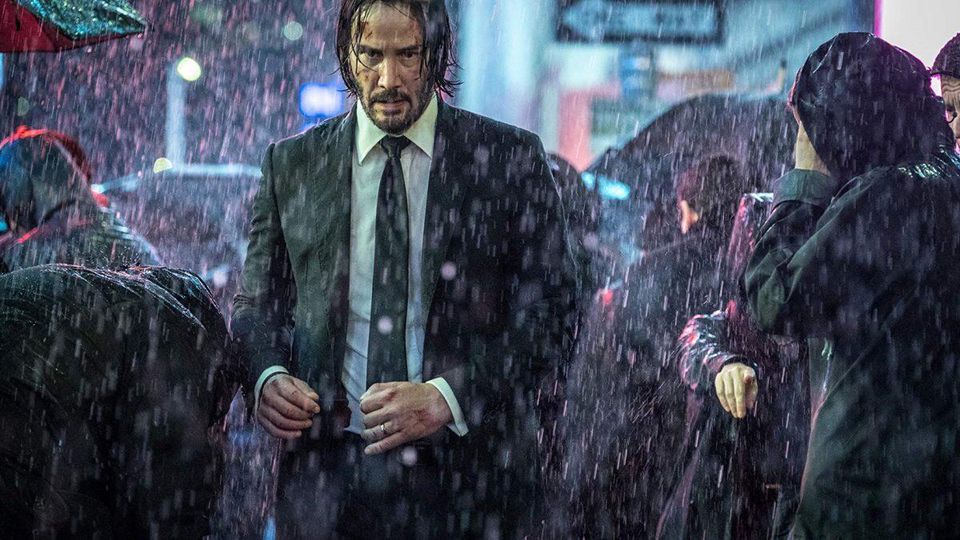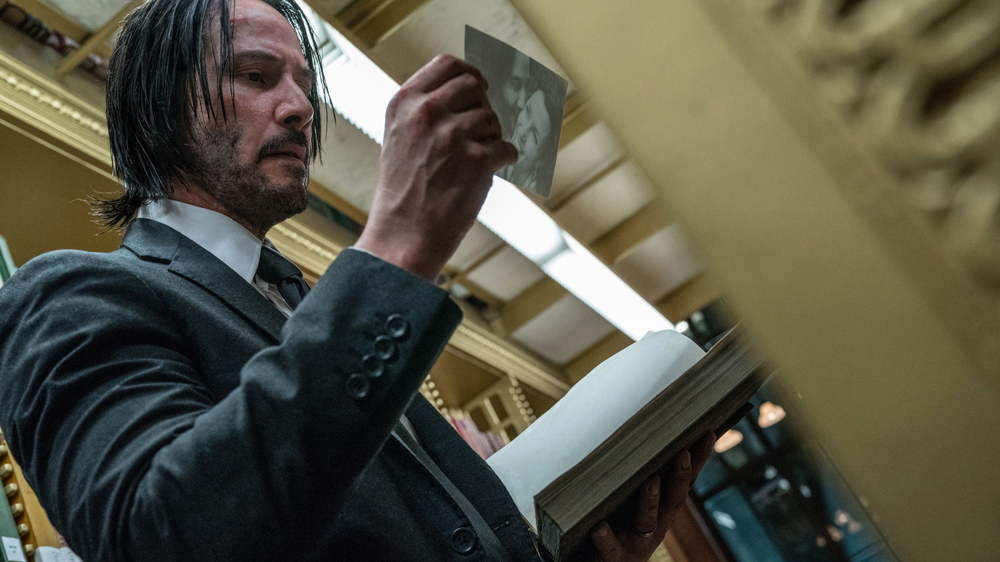Parabellum is the right subtitle for the third John Wick film. It is a bastardisation of part of an old Latin adage meaning “If you want peace, prepare for war”. There’s a lot of that in Chad Stahelski‘s film. But a parabellum is is also a type of gun, no doubt named after the Latin phrase. There’s significance in this. Parabellum is quite an aureate name for an instrument of bloodshed. John Wick is all about grandeur and flourish in extreme violence.
There are many reasons we gravitate toward violence in cinema. One reason is that visceral reaction we experience as a consequence of a film putting characters in which we have placed our empathy in dangers beyond our own realities. But that’s not the appeal of John Wick. These films, no more so than in John Wick: Chapter 3 – Parabellum, exhibit an interest in art over reality in their exhibitions of brutality. The violence is more akin to a dance than anything that reflects actuality, which is how we can suspend our compassion for long enough to enjoy a man getting his head blown off. It’s Jackie Chan, not Schwarzenegger.
The first twenty minutes of Parabellum include some of the most creative fight choreography of recent memory. There’s the sort of ingenuity with environmental choreography that made Chan arguably the most celebrated stuntman in the history of cinema. Even without Chan’s extreme physical commitment to welcoming death (though the actors and stunt co-ordinators nonetheless demonstrate extremities in many forms of commitment) the stream of action, large progressions of movement comprised of micro sequences – just as impressive if your mind could absorb them in time – is staggering.
There’s not much more to Parabellum than this primary strength. Though the opening twenty minutes or so may suggest a more interesting approach to narrative than the first two films displayed, the rest falls into the series’ usual pitfall of employing dialogue as a means to an end. When John Wick isn’t fighting, nobody really does or says anything worthwhile, though they don’t do or say it in beautifully constructed locations.
The action will help ease your involvement. There’s a lot of it. John Wick (Keanu Reeves) was declared ‘Excommunicado’ (one of many cartoonish flourishes) by the High Table as the first sequel drew to a close. There’s a fourteen million dollar price on his head and the world is out to get him. Nowhere is safe. There seem to be more assassins than ordinary punters in this elevated reality as Wick can’t walk past two people in the street without the second person trying to kill him.
There’s a great deal of style to the John Wick series and a serious enthusiasm in the establishment of its fantasy elements, even if they never quite stick. It’s a film that will undoubtedly please you greatly if you were already pleased by the first two instalments. It will unlikely convert those who found little to enjoy in those films. John Wick’s ultimate fault is that he is a blunt instrument. He’s a boogey man, as Ian McShane‘s Winston is fond of reminding us. These movies inform us that love is Wick’s primary motivator but we are never convinced of it. The series reflects that. There’s nothing wrong with watching a beautifully wielded blunt instrument, though the experience comes with limitations.

